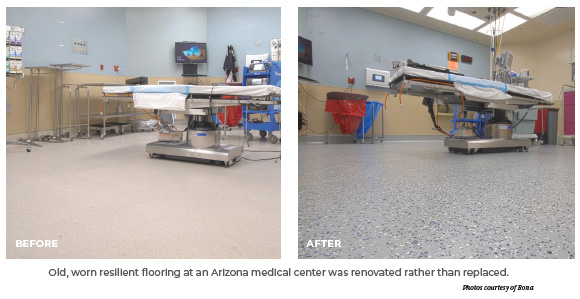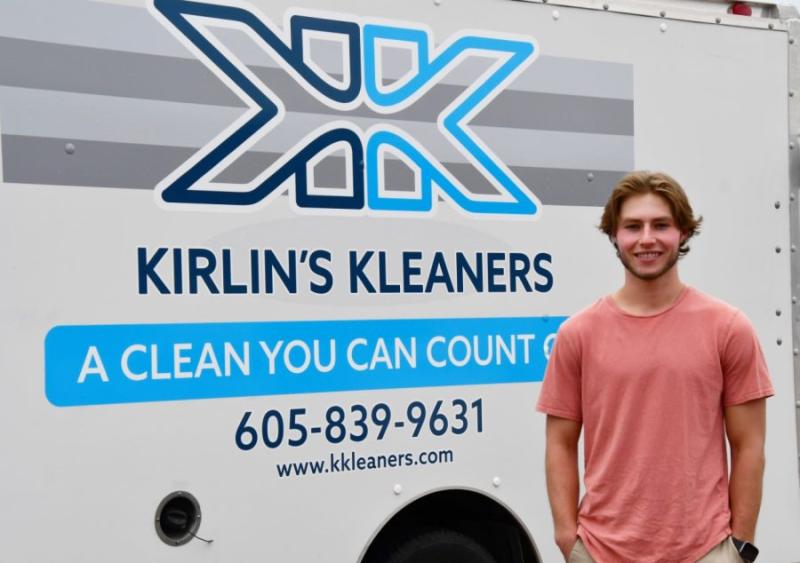The term “monolithic” has a variety of meanings for different people, especially to flooring industry experts. Historically, the term means “a large slab of stone.” Over the past 20 to 30 years, the flooring industry has widened the meaning of this word to encompass a variety of flooring materials.
Merriam-Webster defines monolithic as “cast as a single piece” and “formed or composed of material without joints or seams.” Here’s how other flooring-focused professionals think of the term monolithic:
- Carpet and tile professionals—Monolithic is a type of pattern for modular carpet tile and hard-surface tiles. A monolithic configuration means all tiles point the same way, creating a single direction and resembling a uniform look, as opposed to a quarter-turned, ashlar, subway, or herringbone configuration.
- Resinous-based flooring experts—This group considers monolithic to mean one uniform slab of material, such as cement, marble, or stone. The slab is strong, long-lasting, and offers aesthetic flexibility.
The resinous flooring definition of monolithic resembles the original dictionary description of one strong surface, void of seams and joints; and this definition is core to the “monolithic flooring” facility managers seek today. Monolithic floors are created in one of two ways: by installing new flooring, or by renewing an existing floor. Some facility managers are finding the latter is easier on the budget, requires less downtime, and is more sustainable than replacing floors. Modern resilient flooring renewal systems create monolithic surfaces with safety, design, and budget in mind.
Create a safe and healthy surface
Monolithic flooring surfaces are smooth, which can reduce the risk of bacteria growth, germ contamination, or other fungi-related development that can occur in floors that have joints or seams. The durable quality also makes this type of flooring resistant to chemicals that could harm the floor and the environment.
“Resilient flooring that can be truly monolithic is an innovative change,” says Sue Adams, director of architectural sales at Architectural Flooring Resource Inc., who works closely with architects and designers shopping for flooring solutions.
“The fact that you can have a seamless floor is a huge selling point for architects and designers, especially those working in the health care, education, retail, and government industries where floor health is such a strong consideration.”
This smooth surface offers a sanitary, safe, and eco-friendly option for facility managers on a budget and in a time crunch. Durable and slip-resistant monolithic flooring materials can also improve grip and potentially reduce slip and
fall incidents.
For the safety of all inhabitants, as well as labor crews, facility managers should look for modern resilient renewal solutions that use waterborne chemistries. Waterborne solutions lead to healthier indoor air quality and reduce downtime because there are no toxic fumes to mitigate.

Achieve an on-trend look for your facility
Modern resilient renewal systems offer a wide variety of design possibilities too—including base color finishes and color chips—to create current, on-trend, and welcoming atmospheres. Consider these customizable examples:
A retailer can transform an old worn floor—scarred from rolling racks, faded from displays, and stained from heavy foot traffic—into a warm and inviting atmosphere for shoppers and employees.
A government facility can seemingly erase years of foot traffic with a modern design on a renewed floor.
A health care facility can convert a dull and damaged floor into a new and durable surface, fortified with wayfinding markers and a
trendy design.
A school can renew an old gym floor—as well as a cafeteria, classrooms, hallways, and office areas—to create a bright, welcoming, and fun place for students, teachers, staff, and visitors.
Keep your budget and labor limitations in mind
Floor replacement is both expensive and time consuming, often leaving the facility out of use for a week or more depending on the area being replaced. Facility managers must build this downtime and construction cost into the budget or look to renewal options that are more efficient.
“Most facilities managers understand what you can do with concrete and epoxy, but they are not yet familiar with a resilient renewal system, which is much easier on the budget and environment,”
says Adams. “They are accustomed to sending their decade-old laminate and PVC floors to the landfill. It’s a game-changer, and budget saver, to introduce a resilient renewal solution to designers and end users. I am excited for the possibilities.”
Today’s floor renewal processes also eliminate the recurring cost of polishing the floor so facilities will realize continued labor savings over the life of their floors. These cost-savings can be put toward other floor upgrades throughout the facility or other maintenance projects.
The hard flooring future is resilient
As the resilient renewal flooring trend takes hold, and facilities managers look for strong, healthy, and attractive monolithic flooring they can provide on a budget, this option will become much
more mainstream.
We should expect to see less flooring in the landfill, fewer dollars needing to be allocated for flooring maintenance, and more facilities with attractive, well-maintained floors.











